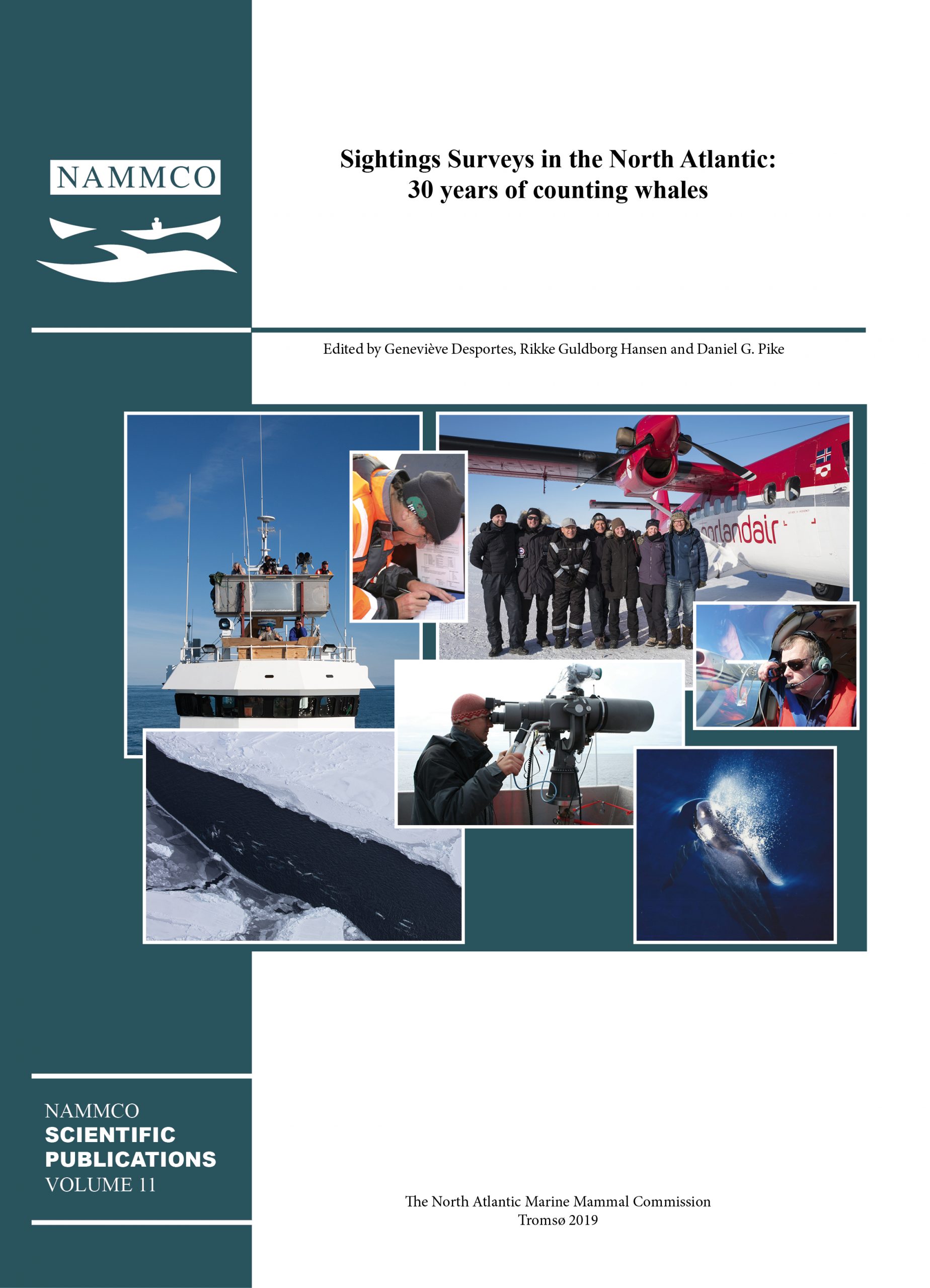16 July 2020: New Article on Cetacean Abundance Estimates from 2002–2013 Surveys Conducted by Norwegian Vessels
It is our pleasure to announce that the seventh article in Volume 11 of the NAMMCO Scientific Publications Series – Sightings Surveys in the North Atlantic: 30 years of counting whales has now been published.
The article, Estimated Abundances of Cetaceans Species in the Northeast Atlantic from Two Multiyear Surveys Conducted by Norwegian Vessels between 2002–2013, was authored by Deanna M. Leonard and Nils I. Øien.
ABSTRACT
Two shipboard line-transect surveys of the Northeast Atlantic were conducted between 2002–2007 and 2008–2013 to meet the ongoing requirements of the Revised Management Procedure (RMP) for common minke whales (Balaenoptera acutorostrata acutorostrata) developed by the International Whaling Commission’s Scientific Committee. Here we present estimated abundances for non-target species for which there were sufficient sightings, including fin whales (Balaenoptera physalus), humpback whales (Megaptera novaeangliae), sperm whales (Physeter macrocephalus), killer whales (Orcinus orca), harbour porpoises (Phocoena phocoena), and dolphins of genus Lagenorhynchus. The 2 surveys were conducted using a multiyear mosaic survey design with 2 independent observer platforms operating in passing mode, each with 2 observers. The abundances of Lagenorhynchus spp. from the 2002–2007 survey were estimated using single-platform standard distance sampling methods because of uncertainty in identifying duplicate sightings. All other estimates were derived using mark-recapture distance sampling techniques applied to a combined-platform dataset of observations, correcting for perception bias. Most notably, we find that the abundance of humpback whales, similar in both survey periods, has doubled since the 1990s with the most striking changes occurring in the Barents Sea. We also show that the pattern in distribution and abundance of fin whales and sperm whales is consistent with our earlier surveys, and that abundances of small odontocete species, which were not estimated in earlier surveys, show stable distributions with some variation in their estimates. Our estimates do not account for distributional shifts between years or correct for biases due to availability or responsive movement.
Read the full article here



